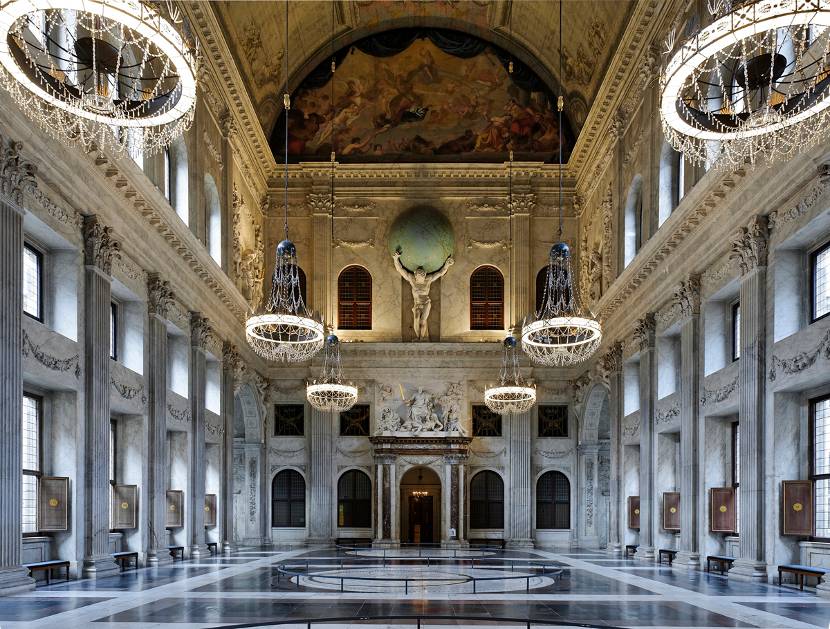The Royal Palace in Amsterdam is used for entertaining and official functions, for example during state visits and for official receptions. It is also open to the public most of the year.
The palace is used by the Royal House for New Year’s Receptions and provides the setting for the presentation of the Erasmus Prize, the Silver Carnation, the Royal Award for Modern Painting and the Prince Claus Award.
The foundation that manages the palace opens it to the public most of the year. In February/March the entries for the Royal Award for Modern Painting are on display and each summer there is an exhibition focusing on a historical aspect of the building or its art.
The Royal Palace in Amsterdam belongs to the state and has been placed at the King’s disposal by Act of Parliament. The palace is located on Dam Square, in Amsterdam.
History of the Royal Palace in Amsterdam
Construction of the Royal Palace in Amsterdam began in 1648. It was built as the city hall and served as such for 150 years. It was first used as a palace for a few days in 1768, when Prince William V, stadholder of the Netherlands, and his wife, Princess Wilhelmina of Prussia, were given a ceremonial welcome in Amsterdam.
In 1806 Louis Bonaparte, Emperor Napoleon’s brother, became King of Holland. In 1808, he took the city hall on Dam Square as his Royal Palace. After the fall of Napoleon in 1813, Prince Willem of Orange, the later King Willem I, returned the palace to the city of Amsterdam. After his investiture, however, the new King realised the importance of having a residence in the capital. At his request the city authorities made the palace available for royal use once again. The palace became the property of the state in 1936.
Queen Beatrix signed the Instrument of Abdication at the Royal Palace in Amsterdam in 2013, as did Queen Wilhelmina in 1948 and Queen Juliana in 1980.

